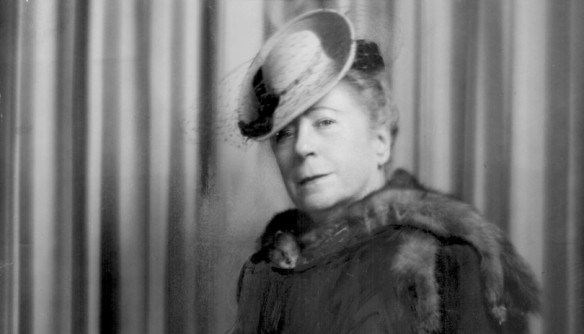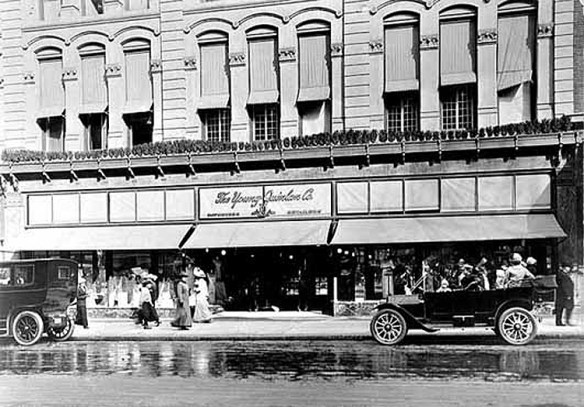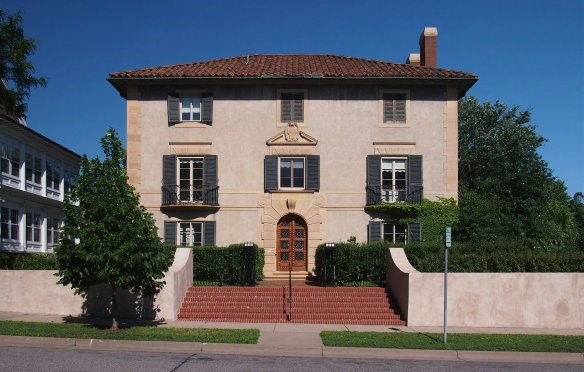Last updated: October 30, 2020
Article
Finding History's Forgotten Women with the Natoinal Register of Historic Places (Part 1)

ForgottenMinnesota.com
As you may be aware, March has been designated as Women’s History Month. I’m proud to say that I was alive when this national “holiday” was born – can’t say that for most! Congress authorized President Ronald Reagan to proclaim Women’s History WEEK to begin on March 7, 1981. Authorizations continued over the next five years, until March 1987 when Women’s History MONTH was designated. Every president since has been authorized by Congress to continue this annual tradition, which brings us to today.
Certainly women should be celebrated all year long. However, there are a number of women throughout our history that deserve special mention because of their contributions to society, and these are the stories told throughout the month of March. In honor of these stories and the women behind them, I’d like to introduce you to three women who you may be familiar with, but perhaps forgotton about, over time.
How did I choose three women out of the myriad of women who are worthy of note? Easy – I referred to a wonderful program administered by the National Park Service: the National Register of Historic Places (NRHP). The NRHP is the “official list of the Nation’s historic places worthy of preservation…it is part of a national program to coordinate and support public and private efforts to identify, evaluate, and protect America’s historic and archaeological resources” (www.nps.gov/nr/). This website lists sites which are devoted to women’s history, as well as those for African Americans, aviation, the Shakers, Lewis and Clark, and dozens of others. These sites are offered as travel itineraries for the purposes of visiting thematically-grouped history sites.
So off we go on an armchair tour of the first of a few forgotten Women in History!!
Elizabeth C. Quinlan House, NRHP Listing 2013
In an age of measure-and-sew clothing that required multiple trips to tailors and fittings, or having the skill to sew your own clothing, Elizabeth Quinlan introduced to American women in Minneapolis, and eventually around the country, a new way of shopping for clothing. Could this passion have been fueled by the fact that Quinlan could not sew and never made a dress in her life?

ForgottenMinnesota.com
Quinlan expanded to a new location in 1926, constructing a five-story, $1.25 million building with 250 parking stalls underground and an elevator which brought customers directly to each floor. Always thinking ahead, the core of the store was built to accommodate seven additional floors, and Quinlan also requested of the architect that the design be easily converted into office space if the store failed.

Wikipedia Commons
At the time, the store was considered the largest women’s specialty shop in the country. In addition to the latest women’s fashions, the store also displayed special displays and touring exhibits. In 1932 Quinlan brought a collection of rare imperial treasures from Russia to the auditorium on the 5th floor, and exhibited the $150,000 Hattie Carnegie gown encrusted with 40,000 pearls. Popular actresses of the time, including Ethel Barrymore and Lynn Fontanne, were frequent visitors to the store.
During her career, Elizabeth Quinlan was an important player in national and local civic work, and a supporter of charities and cultural groups. She founded the Business Women’s Club in 1919, was an advisory board member for the Salvation Army, and served on the National Recovery Administration board, which was part of a New Deal program that advocated raising minimum wage, among other policies. As a side business, she became the director of a taxicab company because she wanted a safe taxi system for women and children. In 1935 she was listed as one of the top 16 businesswomen in the United States by Fortune magazine.
The “Queen of Minneapolis” died in 1947, and The Young-Quinlan Company closed in 1985. The home in the Lowry Hill neighborhood of Minneapolis, where Elizabeth Quinlan lived from 1925-1947, was added to the NRHP in 2013. After brief ownership by the Minneapolis Institute of Arts, the home was returned to private ownership in 1981.
Elizabeth C. Quinlan’s legacy lives on in many ways: through The Elizabeth C. Quinlan Foundation which supports educational institutions and their activities, and social service organizations and their programs, and the still-standing Young-Quinlan Company store, located at 513 Nicollet Avenue in Minneapolis. Quinlan’s “perfect gem” was saved from demolition in 1985. After several million dollars of restoration work, the building now houses offices and retail outlets. I think Elizabeth Quinlan would approve of that!
Stay tuned for more Women’s History Month sites in the coming weeks!
For more information on The National Register of Historic Places, please visit www.nps.gov/nr
Elizabeth C. Quinlan: http://forgottenminnesota.com/2014/03/the-queen-of-minneapolis/
Elizabeth C. Quinlan Home: http://www.nps.gov/nr/feature/wom/2013/Elizabeth_quinlan_House.htm
Written by Allison Powell, Park Ranger, James A. Garfield National Historic Site, March 2015 for the Garfield Observer.
